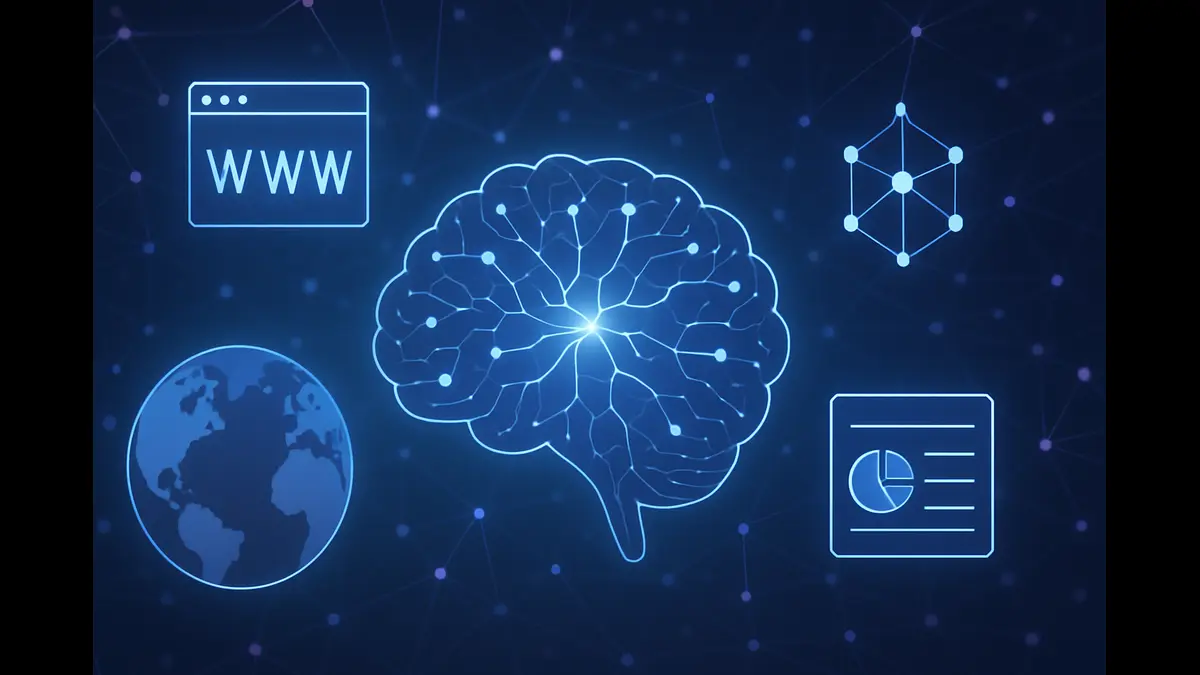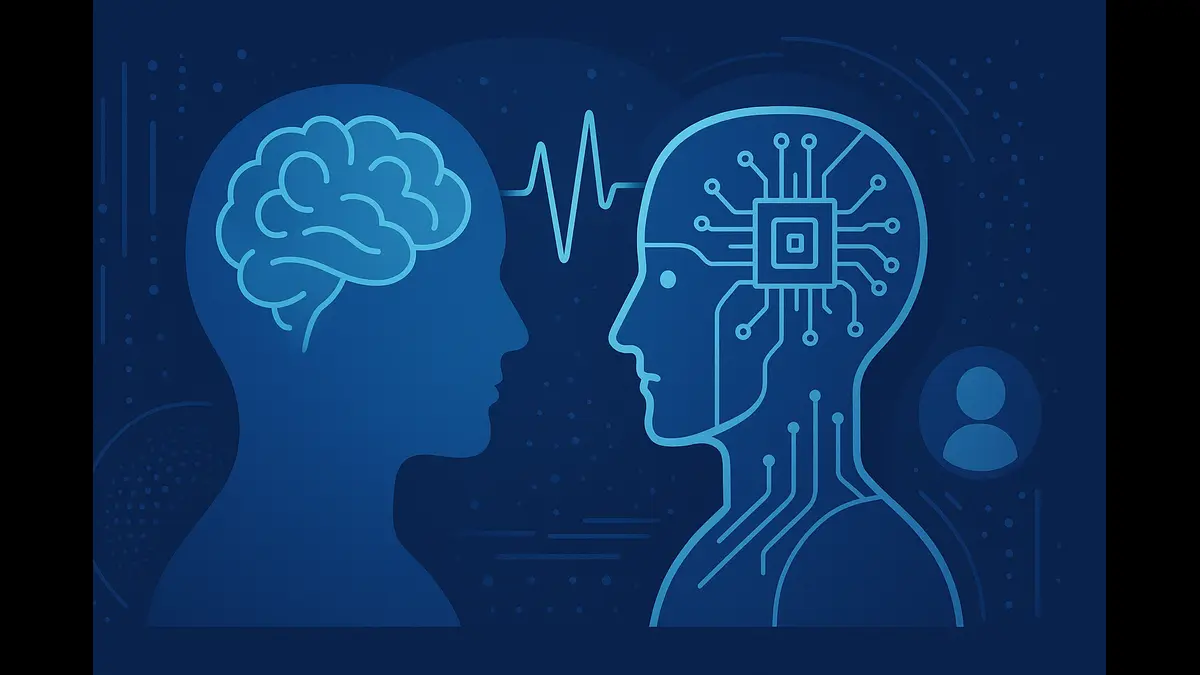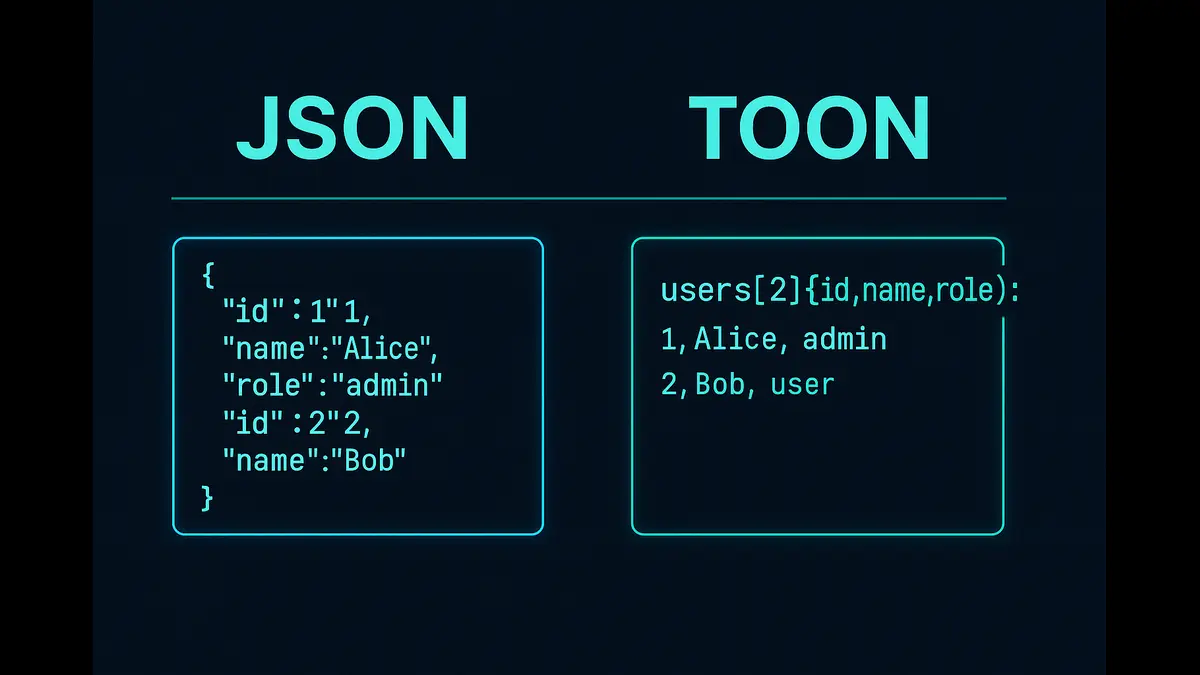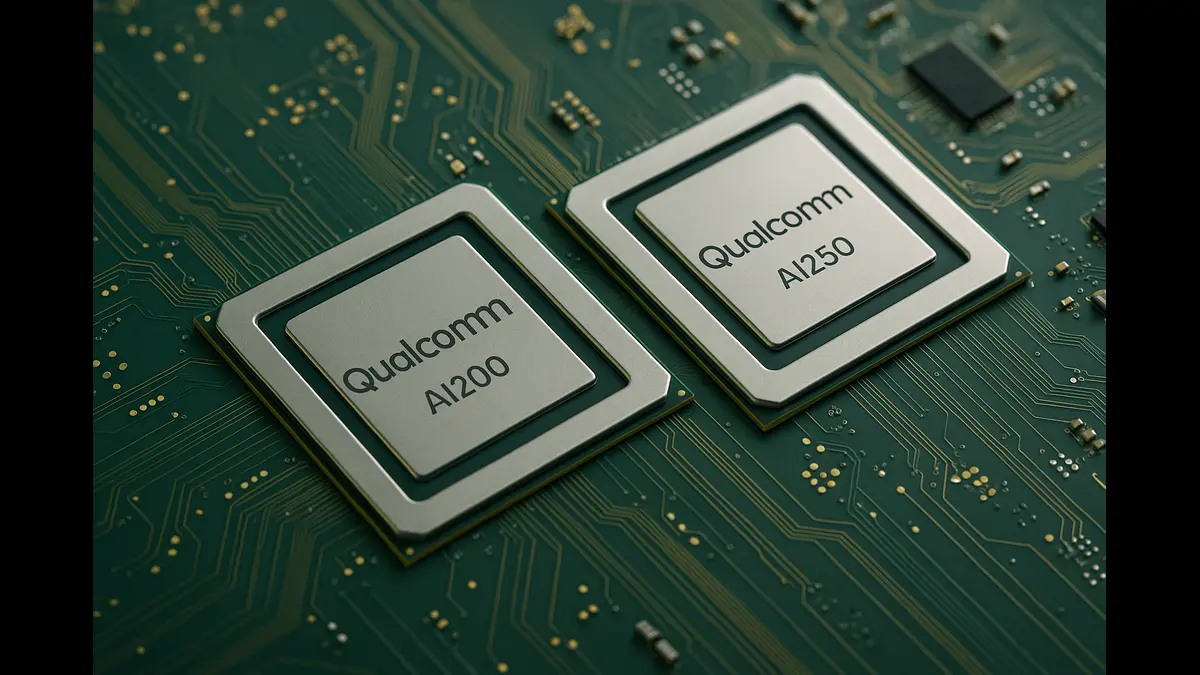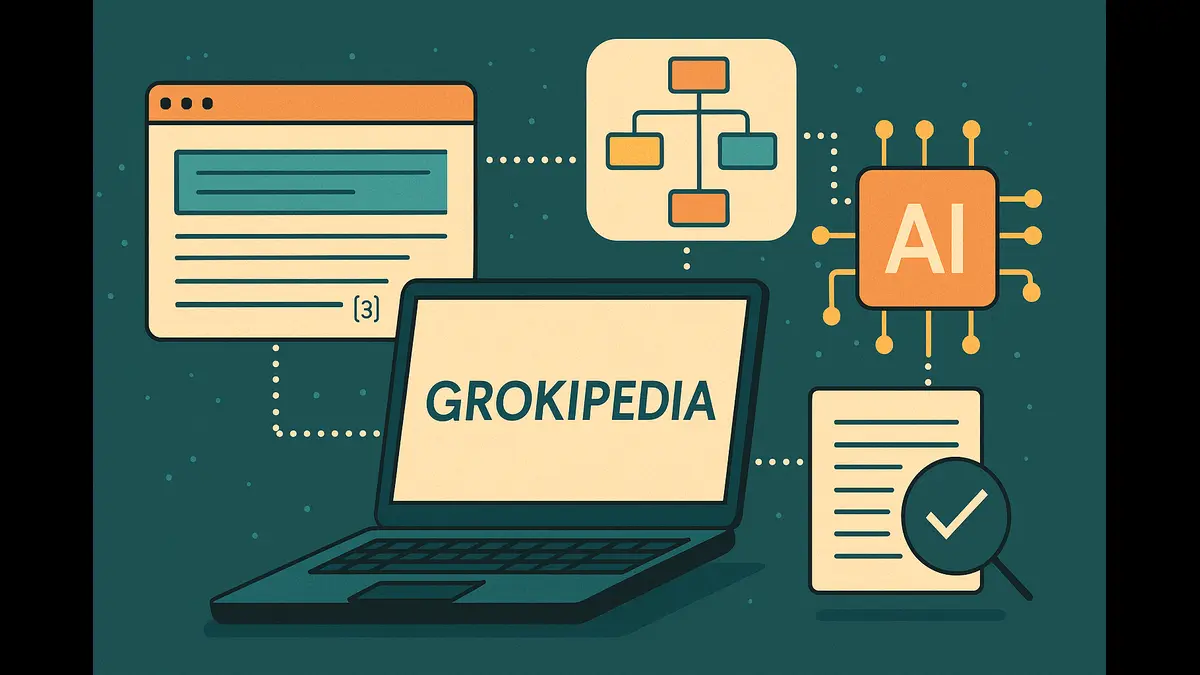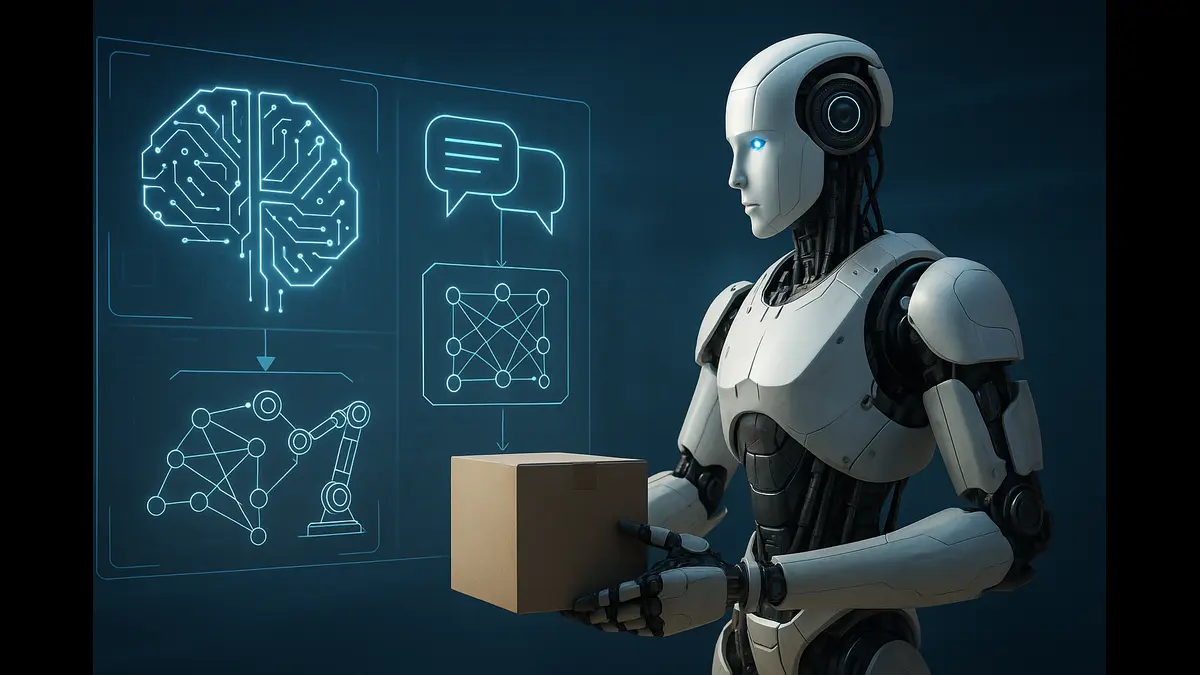
Explore how Vision-Language-Action (VLA) models enable AI to see, speak, and act—ushering in an era of embodied intelligence that bridges digital reasoning with real-world motion.
The Rise of Actionable Intelligence
What happens when artificial intelligence transcends understanding the world and begins to act within it? This question, once the domain of speculative fiction, is now a cornerstone of AI innovation. Traditional models like early iterations of ChatGPT or Gemini 1.0 excelled at processing text, images, or audio, delivering insightful responses but remaining passive observers—confined to digital realms without direct influence on the physical world. Today, a transformative paradigm is emerging: Vision-Language-Action (VLA) models, which equip AI with the ability to perceive, reason, and execute tasks in real-world environments.
This shift from multimodal perception to embodied action marks a pivotal moment in AI’s evolution. No longer limited to predicting the next word or classifying images, these systems are becoming active participants, capable of manipulating objects, navigating spaces, and responding to human commands in real time. Pioneering examples include NVIDIA’s GR00T N1, which empowers humanoid robots with generalized skills; Figure AI’s Helix, a versatile model for dynamic control; and Google DeepMind’s Gemini Robotics 1.5, which integrates visual inputs with precise motor outputs. In this next leap, AI is not just thinking—it’s moving, grasping, and interacting, heralding an era of actionable intelligence that promises to reshape industries and redefine human-machine collaboration.
The Core Concept — What Are Vision-Language-Action Models?
Vision-Language-Action models represent a groundbreaking synthesis of sensory, cognitive, and motor capabilities, enabling AI to function as a cohesive system in complex, dynamic settings. Unlike earlier AI frameworks that operated within silos—handling vision or language independently—VLAs integrate three essential components:
Vision: This module allows AI to interpret visual data from cameras, lidars, or other sensors, recognizing objects, spatial relationships, and temporal changes. Advanced vision encoders transform raw pixel data into structured representations, enabling the AI to “see” its environment with high fidelity.
Language: Leveraging natural language processing, this component enables the model to comprehend human instructions, contextual nuances, and even abstract concepts. Large language models (LLMs), fine-tuned for instruction-following, process commands like “sort the blue widgets into the left bin” while factoring in environmental context.
Action: The action module translates insights from vision and language into physical movements, such as robotic arm trajectories, navigation paths, or tool operations. This involves generating control signals for actuators, ensuring precise and adaptive execution in real-world conditions.
Think of a VLA as a self-contained robotic brain: it perceives through “eyes” (vision sensors), reasons with “words” (language models), and acts with “limbs” (action policies). Real-world implementations illustrate this synergy. NVIDIA’s GR00T N1, for instance, enables humanoid robots to emulate human movements based on natural language prompts, such as “hand me the wrench.” Figure AI’s Helix model excels in unpredictable environments, adapting to new tasks through unified perception and control. Meanwhile, Google DeepMind’s Gemini Robotics series demonstrates versatility across robotic forms, from dual-arm manipulators to mobile platforms, showcasing how VLAs can bridge digital understanding with physical execution.
How VLAs Work — The Architecture
The power of VLAs lies in their integrated architecture, which orchestrates a seamless loop of perception, reasoning, and action. This design ensures that environmental inputs are processed holistically, resulting in outputs that drive meaningful physical behavior.
The perception module forms the foundation, typically employing vision encoders like Vision Transformers (ViT), ResNet, or advanced variants such as EVA-CLIP. These process visual inputs—images, videos, or sensor feeds—into high-dimensional embeddings that capture spatial details, object identities, and dynamic changes. For example, a robot in a warehouse might use this module to identify a package’s position relative to a conveyor belt.
The language reasoning module follows, often powered by instruction-tuned transformers like Gemini, LLaVA, or custom LLMs. This layer interprets textual or spoken commands, aligning them with visual embeddings to form a coherent task understanding. For instance, a command like “move the red box to the shelf” is parsed to identify the target object and desired action, contextualized by the visual scene.
Finally, the action generation module, often a transformer-based or diffusion-based policy head, produces actionable outputs. These could be joint angles for a robotic arm, velocity vectors for a drone, or torque commands for a motor, ensuring the AI’s response aligns with physical constraints. This module often incorporates reinforcement learning or imitation learning to refine actions based on feedback.
A simplified schematic of the VLA process is as follows:
Input: Image/Video → Vision Encoder
(e.g., ViT) → Visual Embeddings
↓
Input: Language Command →
LLM (e.g., Gemini) → Reasoning Tokens
↓
Combined Embeddings + Tokens →
Action Policy Head → Action Tokens
(e.g., trajectories, motor signals)
↓
Robot Actuators Execute Actions →
Environmental Feedback →
Loop Back to Perception
This cyclical architecture allows VLAs to learn from diverse datasets, including real-world demonstrations, teleoperation logs, and simulated environments. By continuously refining their understanding through feedback, VLAs adapt to novel scenarios, making them ideal for tasks requiring flexibility and precision.
Real-World Applications
The versatility of VLAs unlocks transformative applications across multiple domains, enhancing efficiency, safety, and innovation by enabling machines to interact intelligently with their surroundings.
In robotics, VLAs are revolutionizing automation. Autonomous grasping systems in warehouses, powered by models like Helix, can sort items based on visual inspections and verbal instructions, streamlining logistics. Humanoid assistants, such as those driven by GR00T N1, could assist in homes or factories, performing tasks like fetching tools or assembling components with human-like dexterity.
Healthcare stands to benefit immensely. Surgical robots equipped with VLAs can interpret spoken directives from surgeons, using vision to navigate complex procedures and execute precise movements. For example, Gemini Robotics could enable adaptive prosthetics that respond to user commands or assist in rehabilitation by adjusting to real-time visual feedback.
In the automotive sector, self-driving vehicles leverage VLAs to integrate voice commands with visual cues, enhancing decision-making in dynamic environments. A car might process a passenger’s request to “pull over near the café” by identifying the café’s signage and navigating traffic safely.
Industrial automation benefits from vision-guided assembly lines, where VLAs detect defects, adjust machinery, or optimize workflows in real time. This reduces downtime and improves quality control in manufacturing plants producing everything from electronics to automotive parts.
In defense and disaster management, VLAs enable drones to perform autonomous search-and-rescue missions. By processing visual data (e.g., identifying a stranded person) and language prompts (e.g., “scan the rubble for survivors”), these systems can operate in hazardous environments, delivering critical aid without human intervention.
Beyond these, VLAs hold promise in education (interactive robotic tutors), agriculture (precision farming robots that respond to crop health data), and hospitality (service robots handling guest requests). Their ability to combine perception, reasoning, and action makes them a cornerstone of next-generation automation.
Challenges and Ethical Considerations
While VLAs herald a new era of AI, their development and deployment face significant challenges that require careful consideration to ensure responsible and effective use.
Data complexity is a primary hurdle. Training VLAs demands synchronized, high-quality datasets that span vision, language, and action. Models like OpenVLA, trained on nearly a billion examples, highlight the scale required. Yet, real-world variability—such as lighting changes, occlusions, or novel objects—can introduce biases or errors, necessitating robust data pipelines and diverse sources, including simulations and human demonstrations.
Safety and control are critical, as physical actions carry tangible consequences. A miscalculated robotic movement could damage equipment or, worse, endanger humans. Developing fail-safes, such as real-time reflex loops or human-in-the-loop overrides, is essential. For instance, frameworks like VITA-VLA incorporate action expert distillation to enhance reliability, but ensuring consistent safety across diverse scenarios remains a challenge.
The cost of training is another barrier. VLAs require immense computational resources, often involving thousands of GPUs and significant energy consumption. This raises environmental concerns and limits access to organizations with substantial budgets. Innovations like knowledge transfer from smaller models or efficient architectures aim to mitigate this, but scaling remains resource-intensive.
Ethically, alignment is a pressing concern. How do we ensure a VLA’s actions align with human intent, especially in ambiguous or high-stakes scenarios? Misinterpretations of commands or visual data could lead to unintended outcomes. Privacy issues also arise, as VLAs rely on continuous sensor data, raising questions about surveillance or data misuse. In sensitive applications like defense, the potential for autonomous weapons amplifies ethical scrutiny, demanding strict governance.
A philosophical question looms: Can an AI truly understand the why behind its actions, or is it merely executing the how? This touches on the broader challenge of imbuing AI with contextual reasoning that mirrors human judgment, a frontier that VLAs are only beginning to explore.
Future Outlook — Toward Embodied General Intelligence
The trajectory of VLAs points toward a profound milestone: embodied general intelligence (EGI), where AI achieves human-like adaptability by grounding reasoning in physical interactions. VLAs are a critical step, bridging abstract cognition with real-world execution.
Synthetic data and simulators like NVIDIA’s Isaac Gym or Meta’s Habitat-AI will play a pivotal role. These platforms generate diverse, controlled environments for training, allowing VLAs to encounter countless scenarios without real-world risks. For example, a robot can practice navigating cluttered spaces or manipulating objects in simulation, improving generalization to novel tasks.
The convergence of technologies will further accelerate progress. Combining VLAs with reflex loops enables instant reactions to environmental changes, while memory modules allow models to learn from past interactions, fostering cumulative knowledge akin to human experience. This triad—perception-action loops, rapid reflexes, and persistent memory—could yield systems that tackle open-ended tasks, from collaborative manufacturing to personalized caregiving.
In the long term, VLAs could redefine societal structures. In homes, they might enable companion robots that assist with daily chores while adapting to individual preferences. In industries, they could lead to fully autonomous factories that optimize production dynamically. Globally, they might support sustainable development by powering precision agriculture or disaster response systems.
As Vision-Language-Action models mature, intelligence will shift from a conversational paradigm to a collaborative one, where humans and machines co-create in shared physical and digital spaces, unlocking unprecedented possibilities.
Vision-Language-Action models mark a transformative leap in artificial intelligence, moving beyond passive analysis to active, embodied understanding that integrates vision, language, and action. By enabling machines to see, speak, and act, VLAs are poised to revolutionize robotics, healthcare, automotive systems, and beyond, fostering seamless human-machine collaboration.
Yet, their promise comes with responsibility. Overcoming challenges like data complexity, safety, and ethical alignment will be crucial to realizing their potential. As we teach AI to navigate the physical world, we’re not just building smarter robots—we’re redefining intelligence itself, crafting a future where machines move with purpose and precision, amplifying human ingenuity in motion.
Join the Poniak Search Early Access Program
We’re opening early access to our AI-Native Poniak Search.
The first 500 sign-ups will unlock exclusive future benefits
and rewards as we grow.
⚡ Limited Seats available
Discover more from Poniak Times
Subscribe to get the latest posts sent to your email.

